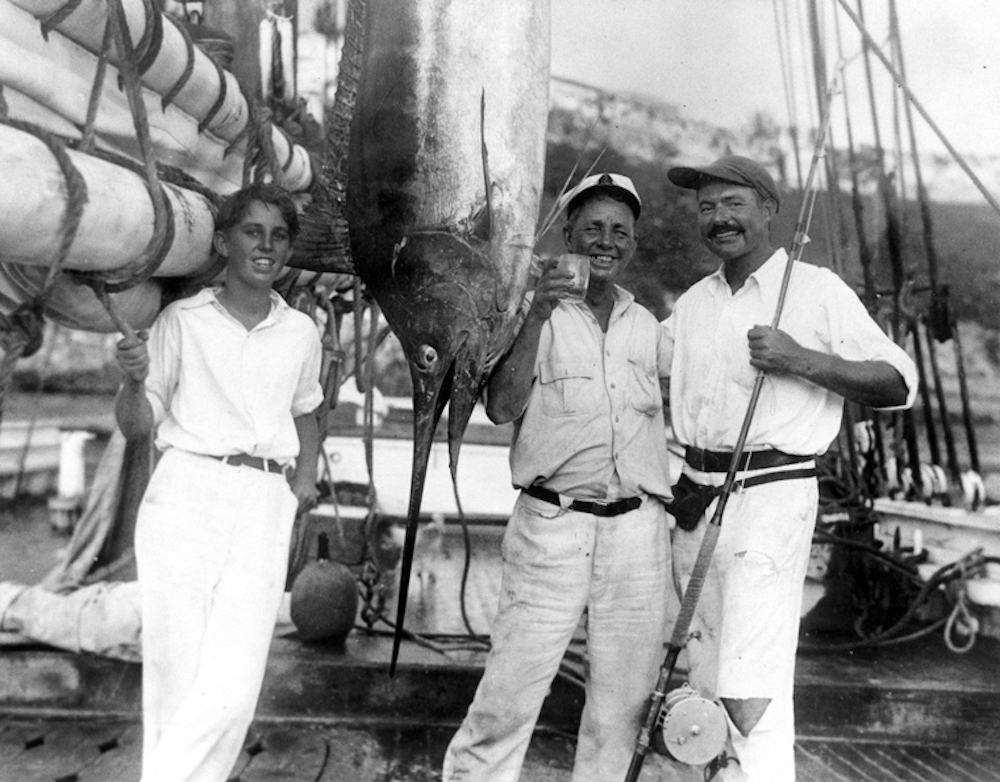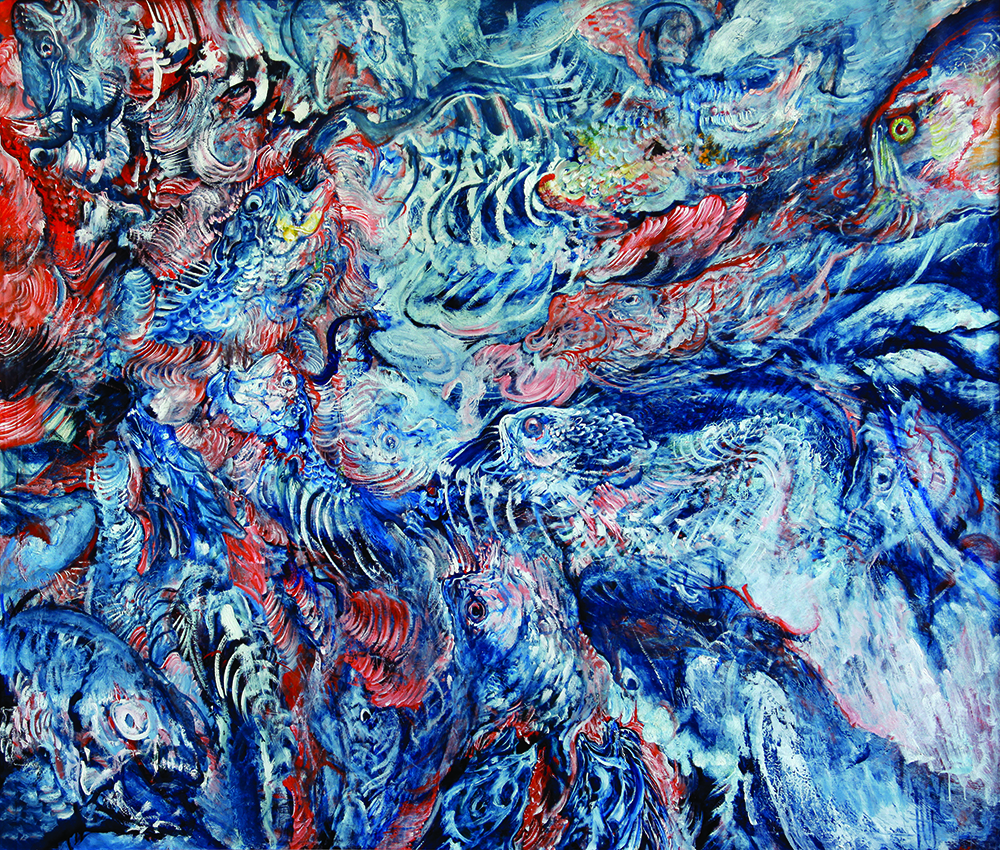A humpback whale may be Russiaa huge creature to the human eye, but they're still tough to spot from space.
Until recently, the necessary high-resolution satellite technology wasn't readily available, but researchers in Western Australia are beginning to use satellite imagery to check on the size of local populations.
SEE ALSO: Forget telepresence robots on wheels, Google wants telepresence dronesThe aim of the project is to keep tabs on Western Australia's humpback whale numbers, explained Curt Jenner, managing director of the Centre for Whale Research.
"The goal of the project is ultimately to make sure this population of humpback whales, which has always historically been the largest in the world, is still viable and has recovered to its full potential," he said. The animals were hunted almost to extinction in the early to mid 20th century.
While projects like this were able to find government and corporate funding in the past, that money has increasingly dried up as whale numbers rebound, Jenner said, forcing he and his research partner on this project, Michele Thums, to find a new solution.
 Original image has been replaced. Credit: Mashable
Original image has been replaced. Credit: Mashable "There are no longer any budgets to send aerial survey teams of people up in planes nor people out in boats to do that population monitoring, and so we were looking for an economical solution that was low in man power," he said.
Drones are one technology now commonly used in whale research, but they're not always able to deliver the scale a satellite can. "This is like a population census, if you will, it gives you a snapshot in time of an entire population as opposed to a focus on one whale at a time," Jenner added.
To obtain the imagery it was a simple as giving the U.S. satellite company DigitalGlobe a time slot, the coordinates and instructions to only take shots on fair weather days using its WorldView-3 satellite system.
The team received two days worth of imagery for around A$40,000 ($30,600) funded by the WA Marine Science Institute. "Even though A$20,000 an image sounds like a lot of money, it's nothing compared to what it costs to put a team of people out and flying aerial surveys," he said.
For Jenner, one big question was whether a colour or black and white satellite image worked better for whale spotting.
 Original image has been replaced. Credit: Mashable
Original image has been replaced. Credit: Mashable "Turns out, the black and white images were better and clearer and higher resolution for seeing the whales than the [colour] ones," he explained. "In the future, we'll probably only be using the [black and white] ones, which will make our jobs a lot easier and a lot cheaper."
This type of monitoring is especially important as human use of the northwest shelf of Australia increases in the form of oil and gas exploration as well as shipping. "I do have a concern that the way that the whales are using the coast line is changing through human impact," he said. "It's necessarily going to displace whales out of their natural habitat."
In 2017, Jenner plans to collect more than two days-worth of whale imagery, and in different locations along the coast line. He also hopes that future satellites with even higher resolution cameras will be able to one day spot and identify individual whales. They could even use small tags that fluoresce, for example, and make it easier to identify them from space.
"As time goes on, only your imagination limits what can be done as the technology gets better," he said. "We're looking forward to the next five to 10 years very much."
[h/t ABC]
 Diseases from mosquitos and ticks have tripled in the U.S., CDC finds
Diseases from mosquitos and ticks have tripled in the U.S., CDC finds
 Participating in the American Theater of Trauma by Patrick Nathan
Participating in the American Theater of Trauma by Patrick Nathan
 Twitch will soon let you block banned users from seeing your stream
Twitch will soon let you block banned users from seeing your stream
 Scientists discover unknown prehistoric world — on Earth
Scientists discover unknown prehistoric world — on Earth
 Staff Picks: Ballet, Bob Dylan, and Black Smudges by The Paris Review
Staff Picks: Ballet, Bob Dylan, and Black Smudges by The Paris Review
 The Hemingway Marlin Fish Tournament by Andrew Feldman
The Hemingway Marlin Fish Tournament by Andrew Feldman
 Mystical, Squishy, Distinctly Unsettling by The Paris Review
Mystical, Squishy, Distinctly Unsettling by The Paris Review
 Bestway Hydro
Bestway Hydro
 Best Echo Dot deal: Save 53% on the Echo Dot Kids (5th gen, 2022 release) at Amazon
Best Echo Dot deal: Save 53% on the Echo Dot Kids (5th gen, 2022 release) at Amazon
 Best robot vacuum deal: Save $300 on the roborock Qrevo Edge
Best robot vacuum deal: Save $300 on the roborock Qrevo Edge
 That amazing Google Gemini video was heavily edited
That amazing Google Gemini video was heavily edited
 Redux: Lost Causes Confound by The Paris Review
Redux: Lost Causes Confound by The Paris Review
 How to watch OSU vs. PSU basketball without cable: game time, streaming deals, and more
How to watch OSU vs. PSU basketball without cable: game time, streaming deals, and more
 Exceptionally rare radio sources detected in the distant universe
Exceptionally rare radio sources detected in the distant universe
 Best soundbar deal: Roku Streambar and Roku Wireless Bass on sale for $149.99 at Amazon
Best soundbar deal: Roku Streambar and Roku Wireless Bass on sale for $149.99 at Amazon
 Remi Cruz on her Twice bias, Maangchi, and being Lana Del Rey's favorite vlogger
Remi Cruz on her Twice bias, Maangchi, and being Lana Del Rey's favorite vlogger
 On Effort and Letting Go by Salvatore Scibona
On Effort and Letting Go by Salvatore Scibona
 'Severance' Season 3 gets confirmed by Apple
'Severance' Season 3 gets confirmed by Apple
 The Anonymous Diary by Kathryn Scanlan
The Anonymous Diary by Kathryn Scanlan
This is what astronauts saw from 250 miles above Category 4 Hurricane Matthew'CounterApple's Tim Cook says augmented reality, not VR, is the futureMIT game lets you decide which humans survive in selfAmazon courts Bollywood ahead of Prime Video launch in IndiaLondoner spends 15 hours stitching the greatest 'Arthur' meme of all timeKanye West cuts gig short after Kim Kardashian reportedly held at gunpointPerfect photo of Rickie Fowler proves the single life's not so badESL One New York 'CS:GO' recap: Na'Vi dominates, Team Liquid beats Fnatic twiceFacebook Messenger Lite is here for slow connections and older AndroidsThis is what astronauts saw from 250 miles above Category 4 Hurricane MatthewCubs pitcher Jon Lester brilliantly responds to Twitter users who think he's Lester Holt'Saturday Night Live' takes on first presidential debateA classic tale of news aggregation gone wrongKim Kardashian's $4 million wedding ring was reportedly taken in robbery'Westworld' is back. Should you saddle up and join the posse?'Skylanders Imaginators' lets players 3D print custom toysAmazon courts Bollywood ahead of Prime Video launch in IndiaNew augmented reality comic book shows the resilience of acid attack survivorsFootage from North Korea show devastation in flood Mars dust devils leave wild tracks all over Martian crater South Africa vs. Bangladesh 2024 livestream: Watch T20 World Cup for free WWDC 2024 Sam Altman spotted as OpenAI partnership rumors heat up Meteor shower this week: Everything you need to know about tau Herculids Apple Intelligence: Apple announces new era of AI The vital telescopes discovering Earth SpaceX achieves incredible feat of 3 launches in 36 hours New Zealand vs. Uganda 2024 livestream: Watch T20 World Cup for free Ant Group sees insurance business boom with 30% y Shop the Nintendo Mega Extreme Fun Sale: Score Animal Crossing for 30% off NASA's Artemis moon rocket launch date unclear after incomplete test WWDC 2024: Everything announced, from iOS 18 to Apple Intelligence Chinese online retailers may face import duty in the EU · TechNode United States vs. Ireland 2024 livestream: Watch T20 World Cup for free Scientists film a jellyfish with a belly full of prey in the deep sea NIO, Xpeng, Li Auto to use in 'Monster' Mars quake shows the red planet isn't nearly dead VisionOS 2 for Apple Vision Pro announced at WWDC 2024, including ultra Apple Maps: Topographic maps announced at WWDC 2024 Bangladesh vs. Netherlands 2024 livestream: Watch T20 World Cup for free
1.076s , 10136.8125 kb
Copyright © 2025 Powered by 【Russia】,Wisdom Convergence Information Network